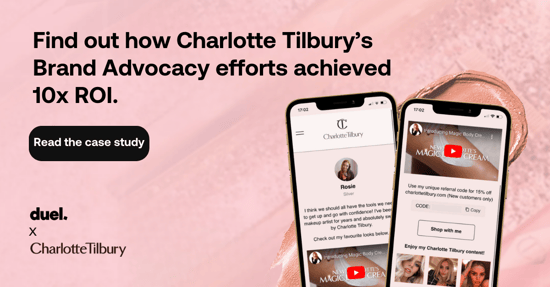Blog
What is Brand Advocacy?
Throughout history, human beings have made important decisions based on the trust they put in their friends, families and networks. It started with villagers relying on localized information, trusting their neighbours to find the best bakers or carpenters in the area. Marketers were held accountable by the reputation they could build amongst their customers, and as a result, they needed to provide a certain level of service to compete.
However as the industrial revolution flourished and brought with it mass media and a slew of product and service choices, the control of a business’ reputation moved into the hands of the businesses themselves. Brands could use public relations, radio, television and other advertising channels to reach millions of potential customers and deliver a tightly controlled message.
Now the internet has changed everything. Information travels between customers much more quickly than brands can manage, and so the control of reputation and trust rests yet again in the hands of a person’s friends, family and wider network. More than ever before, brands have to transform customers into passionate advocates and maintain authentic, mutually supportive relationships.
Because of this shift in how humans connect and communicate, companies that focus on encouraging advocacy behaviour like recommending products to friends or leaving reviews will be able to connect with their customers in more efficient and meaningful ways.
The emergence of brand advocacy
Lululemon -a $32 billion athletic apparel company with a worldwide presence- has been built entirely on advocacy and community principles—their customers are quick to share stories, convince friends to buy products and argue in defense of the brand when needed. They’ve done this all without an official marketing team, opting instead to trust their customers to help them build the company.
Many other brands have adapted to this shift and found ways to encourage customers to engage in the practice of brand advocacy.
Brand advocacy
Any behaviour that involves a customer supporting or recommending the brand that they love
It can include everything from personal recommendations and referrals, to creating unique content for a brand to use or providing customer support.
While the concept of brand advocacy is quite new, advocates have always existed under different labels: superfans, ambassadors, enthusiasts and so on. However, their impact is now larger than ever because of the collapsing trust between many brands and the average consumer. That is why brand advocacy as a practice is becoming more prominent.
While “recommending and supporting behaviour” can be quite a vague concept, there are specific examples of customer actions that marketers can encourage to help drive word-of-mouth sales and build a long-lasting brand.
After working with over 50 brands and conducting research on 200 more, the Duel research team has created this primer to help categorise and illustrate advocacy behaviour. Generally speaking, advocacy can be split into two groups of behaviour: recommending and supporting.
Recommending behaviour
Recommending behaviour involves customers telling others in their networks to engage with the brand, typically in the form of purchasing products but can include getting others to signup for a newsletter, follow on social media or attend brand events.
Recommending behaviour is often expressed in the form of referrals and message spreading.
Referrals
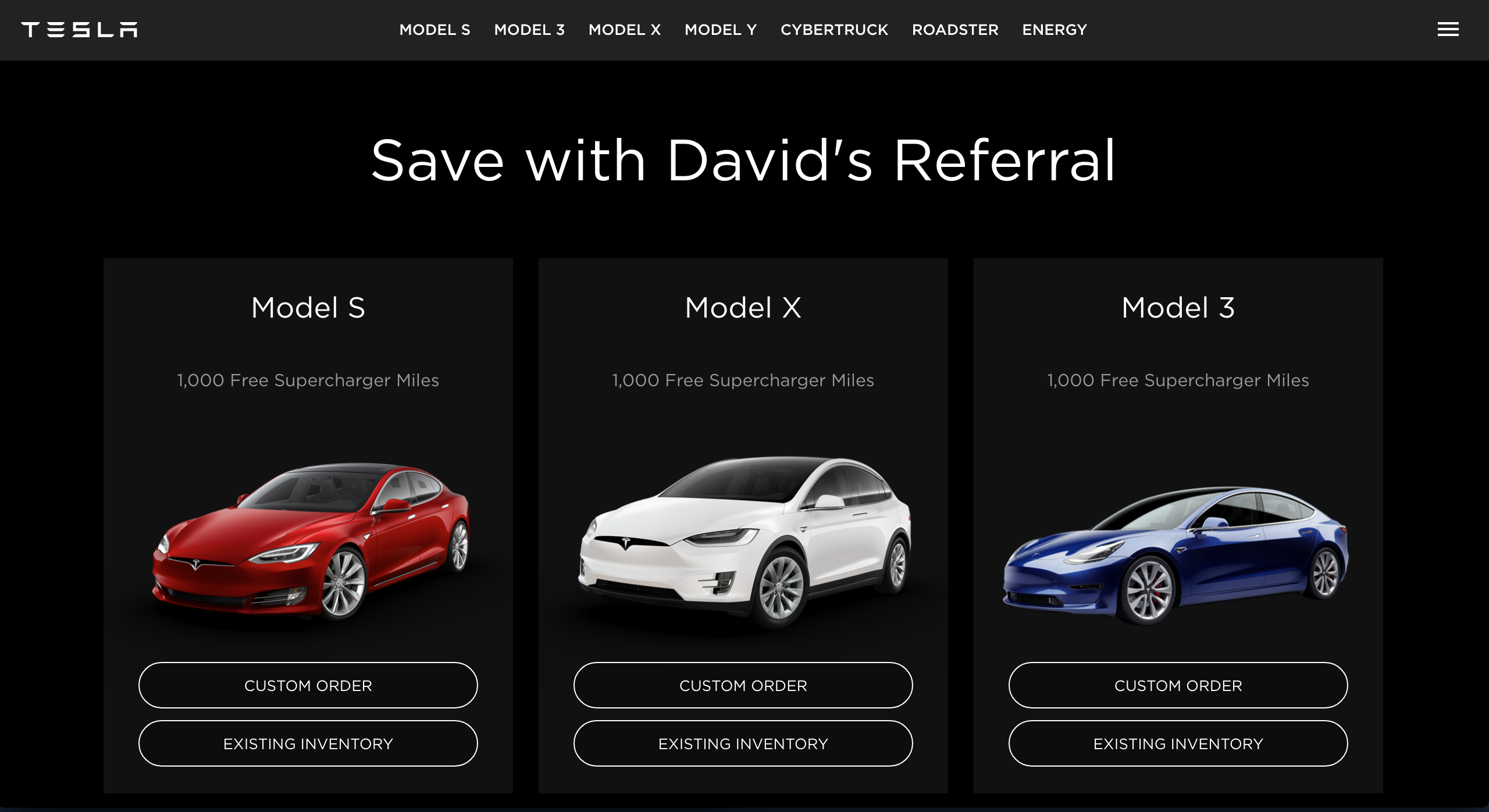
It is human nature to share strong opinions with others, especially with our most trusted confidantes. A good referral or recommendation not only makes a person feel like an expert, but also creates benefits for both the referrer and referee.
Referrals are often motivated by a transactional benefit (like discounts) or an emotional connection (like promoting sustainability), however at their foundation, all referrals require a customer to put their own reputation on the line—people will not refer friends and family to products or services they don’t believe in.
Ride-share companies like Uber and Lyft represent transactional referrals. Customers are more than happy to refer friends to multiple different ride-share services to get discounts or free rides, but with little loyalty or attachment towards one brand or another.
Tesla’s referral program on the other hand, asks customers to recommend their networks in a purchasing decision that costs many thousands of pounds and includes specific values like sustainability. With higher costs and more personal connections, customers of Tesla truly have to believe in their product and narrative in order to recommend them.
A crucial rule to remember: relevance
Companies that see success with referrals follow an important rule for encouraging referral behaviour—they give out relevant rewards. In Tesla’s case, the referrals give the referrer and referee an additional 1,000 miles of free supercharging, while Uber and other ride-shares provide discounted trips. Both of these rewards relate directly to the use of the product or service the customer is buying. In other words, Tesla did not include iPads as a reward for their referrals, because they are not a tablet company.
Message spreading

“Virality” exists as a marketing term because of the ability of a human being to spread ideas and opinions near instantaneously to a network with the potential for exponential growth. Humans naturally share, and with only 6 degrees of separation existing between every single human being on Earth, ideas spread quickly.
Advocates of a brand can be especially powerful in this regard. Not only will they share ideas, but they will be motivated to convince others -beyond simply sharing a post- to actually engage with a brand.
Before it became a titan of commerce and synonymous with controversy, Facebook was one of the best examples of viral sharing through advocates. Starting as an exclusive social media service for college students at Harvard, Facebook grew through student invites as the service was exposed to more college campuses, secondary schools and eventually the general public.
While Facebook’s customer profile has drastically changed, its initial focus on pleasing users and providing a rare and valued service at a unique time in history allowed it to spread quickly.
Supporting behaviour
The second half of brand advocacy behaviour is supporting behaviour. This covers a number of things that a customer can do that help a brand without directly relating to capturing more customers or more revenue. For brands, this could mean customers providing their data for market research or even supporting other customers.
Customer support
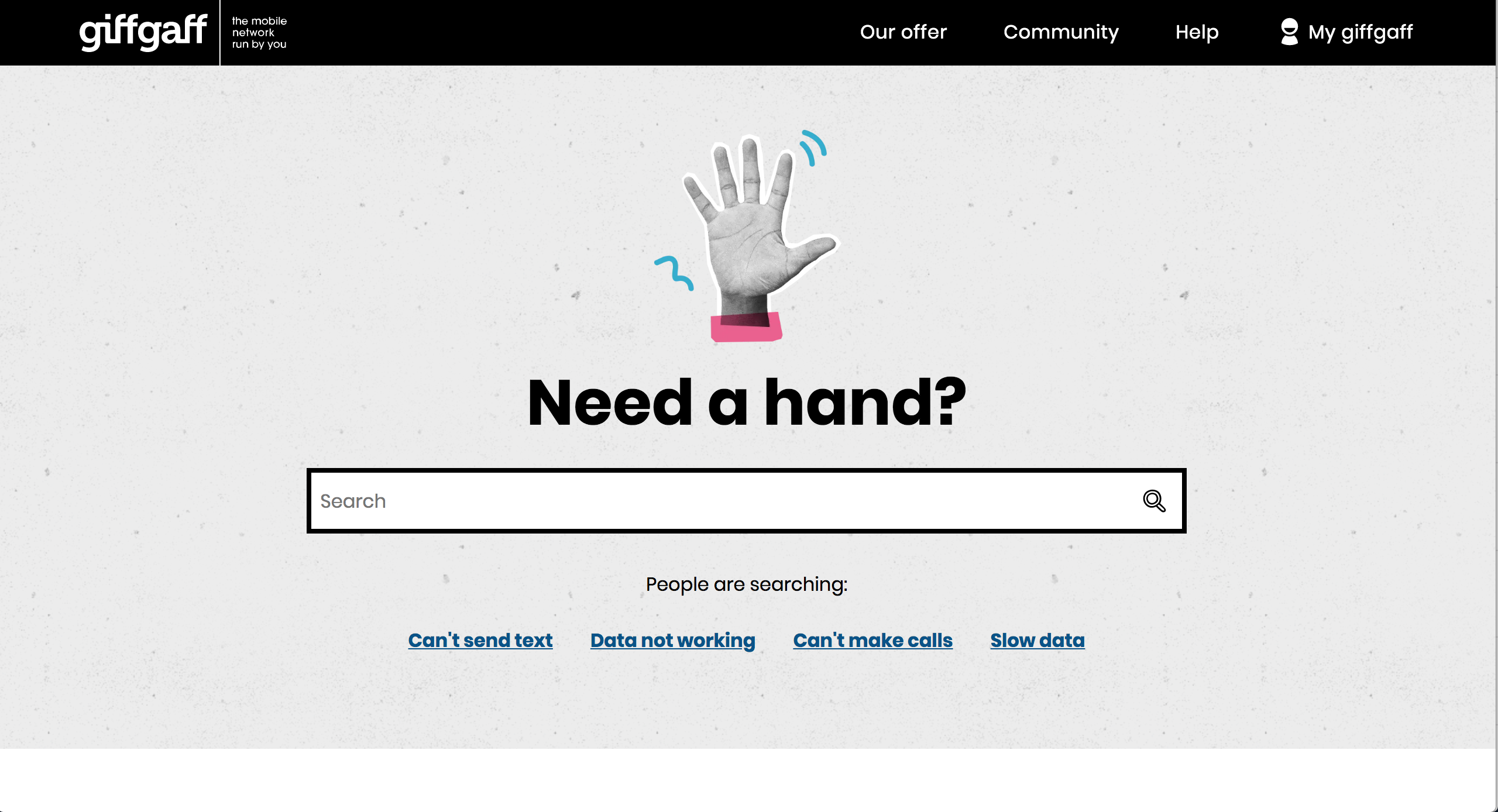
Research has shown that acts of compassion and altruism often leave the giver with a strong sense of wellness and accomplishment that diminishes less quickly than more self-interested methods. This is why many people love the feeling of helping others—and many will do that by helping other customers of a specific brand.
Now, it’s important to note that this is not always a positive indicator of the health of a brand. Customers may help each other because they explicitly don’t trust the support systems of a company or are frustrated with the experience. The positive or negative impression of a brand makes the difference between an avid advocate and an angry customer.
An example of excellent customer support by advocates rests in GiffGaff’s customer support network. The SIM card provider has an extremely unique model: the customers are the customer support team. They feature robust forums and reward customers for fielding complaints, answering questions and building a friendly community overall.
This is no small feat—customer service is often a stressful experience for all parties involved, so to be able to create a trustworthy support network of customers is a testament to the quality of GiffGaff’s brand.
User-generated content

User-generated content (UGC) is any media such as videos, images or writing that a customer creates that involves a brand or its products. Millions of examples of UGC are produced every single day as happy customers create social posts and videos relating to the products they love to use. With smartphones representing hand-held media production centres, customers need only some creativity and desire to be able to produce awe-inspiring content for brands.
Action camera producer GoPro is a perfect example of this. Their customers were more than happy to film heart-racing action shots of themselves snowboarding, jumping into caves, and even saving lives using GoPro’s cameras. And to GoPro’s credit, they’ve made sure to acknowledge their customers’ creations by regularly posting on their YouTube channel as well as other marketing channels. They’ve also incentivised UGC by creating the “million dollar challenge” which rewards selected content creators with a cut of a million-dollar prize.
Content creation, like other advocacy behaviour, is a high-commitment task. Creators have to employ creativity while taking the time and energy to produce something they are happy with—and many will post their creations on their own social media channels as well.
Reviews and testimonials
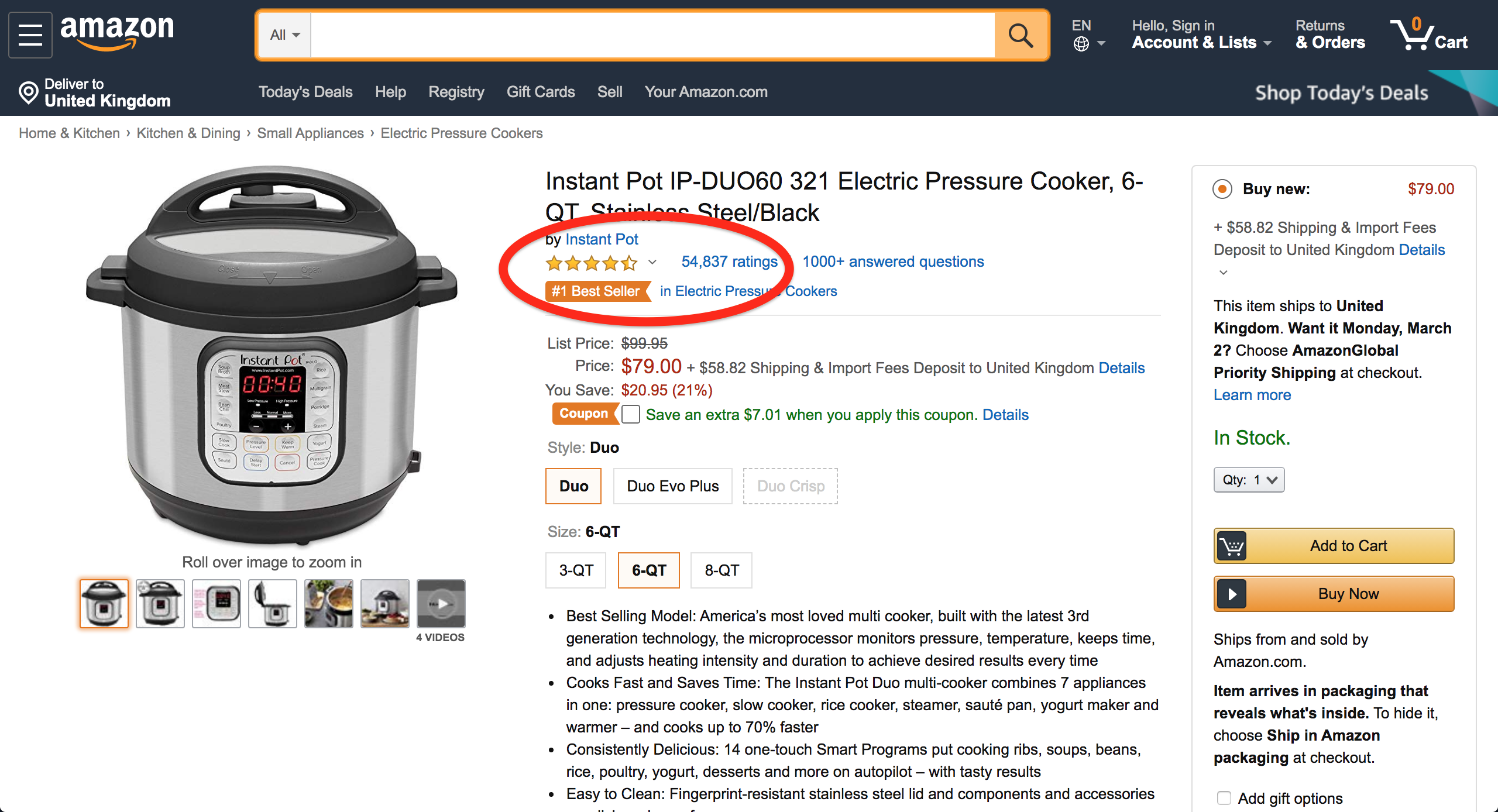
Reviews and testimonials have always existed in a verbal sense, but the digital era has allowed these opinions to become more salient and quantifiable. Any potential buyer can now hunt for reviews and find a number of opinions expressed in the form of simple number ratings, videos, long-form essays and much more.
Instant pot for example, is an already popular electronic pressure cooker that boasts an average score of 4.6 out of 5 across 50,000 reviews on Amazon’s American site. In the eyes of a consumer, it is extremely difficult to believe that 50,000 reviewers could all be wrong about their purchase.
Great reviews are even more crucial for lesser known brands that are competing in saturated markets—something headphone producers Mpow know very well. In a marketplace dominated by big names like Apple, Bose, Sennheiser and Sony, they’ve managed to sell headphones at a $30 price point without consumers doubting their quality. That is the power of having over 30,000 Amazon reviews and an average score of 4.4.
Reviews and testimonials clearly add value and trust to any brand that can capture quality responses, but reviews are also some of the most difficult components of advocacy because of the nuance they require.
Striking the balance
The challenge has to do with the perception of reviews by potential buyers. Customers tend to overvalue the presence of negative reviews over positive ones, representing a natural human tendency to avoid major risks. Customers also distrust overly-positive reviews and interpret them as discrete paid advertising or unreasonably biased.
To add to all of this is the issue of volunteer bias. Reviews that are volunteered typically come from people with opinions on either extreme. Only those who are extremely satisfied or dissatisfied will take the time to leave a detailed review. What is left is a situation in which buyers overvalue negative reviews, don’t believe in positive ones and have very few points to reference in between those extremes.
Interestingly, providing small pro-social incentives or even monetary incentives actually brings more accurate reviews, simply because reviewers that represent the middle of the scale are more likely to provide input.
What does this mean for brands? Customers and advocates should be incentivised to leave authentic, well-argued reviews that include a diversity of ideas in order to stand a chance of being trustworthy.
Feedback and collaboration
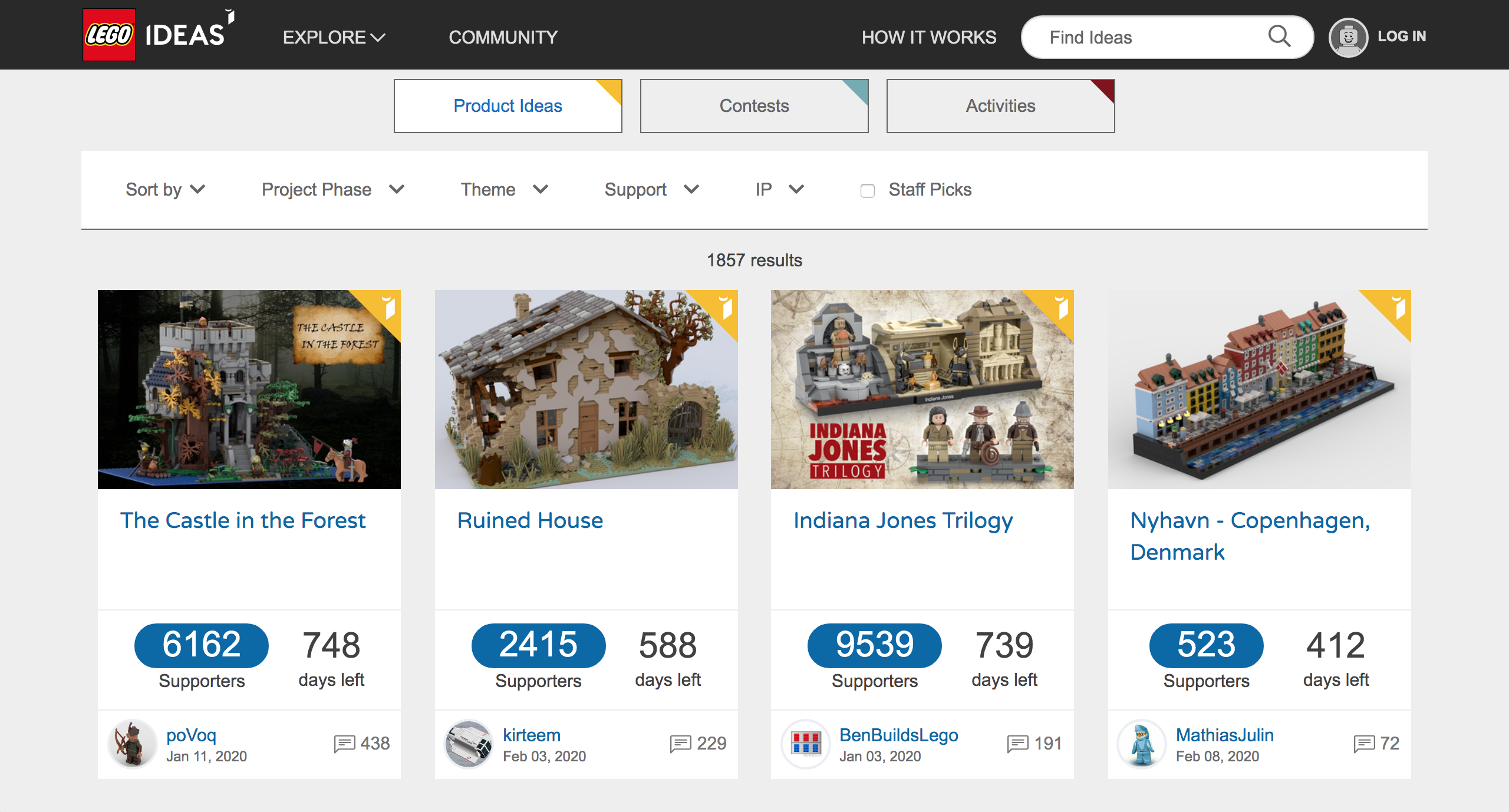
Products and experiences improve when customers are willing to share their ideas and feedback with a brand. It isn’t always easy to gather this feedback, and not all feedback should be weighted equally, but advocates often give quality, honest feedback because of their desire to see a product improved.
However, gathering feedback is only half the battle and can easily be counter-productive—if customers don't see changes implemented after they give feedback, they will continue to lose trust in the brand.
Lego perfectly embodies this idea with the “Lego Ideas” initiative. Customers submit ideas via an online community and can vote on changes and new ideas. Lego reviews these ideas and selects highly-voted options to turn into new releases. For Lego, gathering and implementing feedback creates a process of co-creation that makes dedicated customers feel like they are a part of the brand itself.
Loyalty

Loyalty behaviour is something that occurs when customers come back to a specific brand even when promising alternatives arise. Why do customers buy the exact same pair of shoes when their current pair break? Why do they get their haircut from the same barber? Or multiple kits for the same sports club?
Human beings engage in loyalty behaviour as a method of increasing their social status and feelings of belonging. Strong loyalty to family, a specific sports club or an artist brings with it feelings of pride and enforces a specific personal identity. A person can determine who they are, in part, by who or what they are loyal to. These associations also come with a sense of comfort and community—potentially even spite for opposing groups.
For some brands, the quality and experience of a product is enough to encourage customers to remain loyal, for others, a great experience is just the bare minimum to compete—which is why brands look for methods to actively incentivise loyalty.
The gold standard in loyalty programs
The clearest day-to-day example of loyalty comes in the form of coffee shops, and few have ever encouraged loyalty better than Starbucks.
With at least 16 million members and 40% of all Starbucks transactions, the Starbucks loyalty program is one of the most successful in the world.
How has the behaviour been encouraged? Customers don’t come back to Starbucks over and over again because of the opportunity to get a free shot of espresso or soy milk. They come back first and foremost because of the quality of the customer experience—the quality of the coffee, the speed of service, the ambiance and the demeanor of the staff all cohesively build a great product and experience. The loyalty program however, amplifies this loyalty by acknowledging and thanking customers for their efforts, which comes back to the importance of creating meaningful connections with customers in order to encourage great advocacy behaviour.
What do all brands with great advocacy have in common?
With so much upside to brand advocacy, what needs to be done in order to achieve it? Are specific brands more well-suited for advocacy than others?
Just like personal relationships, human beings will look for certain character traits in a brand before they commit themselves to becoming an advocate. The Duel research team has found a pattern of traits that are possessed by companies with great brand advocacy.
A remarkable product and customer experience
Strong brands with powerful advocates build remarkable products and ensure that the entire customer journey is fine tuned to delight customers. They make sure the customer experience is great throughout every touchpoint and process.
Values, treatment, impact
Customers now expect more from companies than the singular desire to sell products and services for profit. They want brands that align with their personal values and directly impact important causes that are close to their hearts.
Authenticity and transparency
Authenticity and transparency serve to create the most important element in a relationship between a brand and their customers: trust. Customers are quicker to trust brands that are honest with them and prove that they are staying true to their values and mission. In a world as digitally connected as this one, it is becoming easier and easier to spot false intentions.
Long termism
Like any other relationship, time is required to build enough rapport to create trusting and supportive behaviour. Brands that transform customers into advocates typically focus on delivering value in the long-term, often at the expense of short term gains.
Brands that succeed have built these character traits into their DNA. With the foundation of a brand set on solid principles, marketers have the opportunity to embed brand advocacy directly into their strategies.
Incorporating brand advocacy into marketing
Brand advocacy can be split into two specific channels when considered from a marketer’s perspective:
- Organic brand advocacy
- Amplified brand advocacy
Organic brand advocacy is similar to organic word of mouth or search engine optimisation. Advocates naturally engage in supportive behaviour throughout their day-to-day lives without prompting or direction from brands.
Amplified brand advocacy on the other hand, occurs when brands put into place systems and tactics that encourage customers to engage in advocacy behaviour.
Many systems already exist that are designed to encourage specific behaviours—referral platforms, loyalty points, rewards programs and fan clubs are just a few examples.
The most effective way to amplify advocacy is in the form of brand advocacy programs—systems that encourage customers to engage in supporting and recommending behaviour. These systems bring structure and direction to a customer’s brand advocacy and reward them for their efforts. (Read more about how to build a brand advocacy program here.)
What is a brand advocate worth?
For marketers, it can be difficult to quantify the value of an advocate, especially with so much variance in what advocates can do.
A simple bottom-up method is to consider how many additional sales or customers a single advocate can bring in with their efforts, and then multiply this number by a customer's lifetime value (LTV). This gives a marketer the impact of a single advocate, and can be scaled depending on how many advocates a brand can create. If one advocate convinces three friends -on average- to become customers, that is a customer's LTV multiplied by three for each advocate of a brand.
Brand advocacy is a set of customer behaviours that lead to mutually beneficial outcomes for both the customer and the company. These behaviours are extremely impactful, especially as acquisition costs rise and more traditional methods of digital marketing grow more inefficient.
Marketers have a great opportunity now to encourage these behaviours and build brands that grow through the strength of their own customers.

